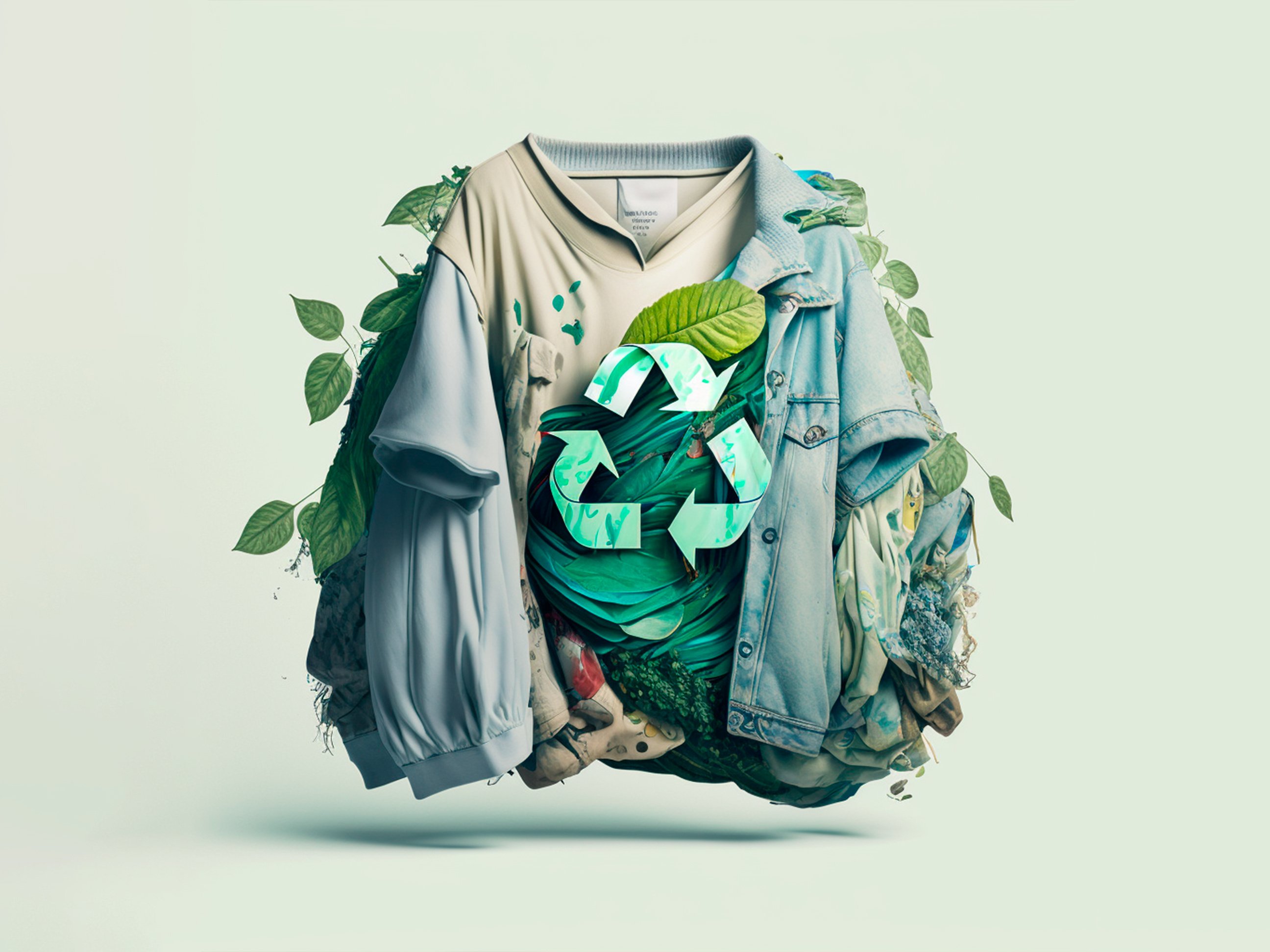Sustaining Neighborhood Cape Town Sustainable Fashion for a Greener Future
Sustaining Neighborhood Cape Town Sustainable Fashion for a Greener Future
Blog Article
Keep Ahead of the Contour by Exploring Innovative Fashion Fads
In an industry as vibrant as style, staying ahead entails greater than just following present fads-- it demands an exploration of development. Smart fabrics, as an example, are changing garments into practical work of arts, while 3D printing is transforming design processes with its personalized, waste-reducing capacities. As sustainability becomes a foundation, technologies like environmentally friendly materials and circular style methods are improving ecological responsibility - Cape Town Sustainable Fashion. In addition, the merging of modern technology and fashion heralds a new era of customer involvement. Just how, after that, can these emerging trends redefine the future of fashion, and what implications do they hold for brand names seeking to flourish in this advancing landscape?

Welcoming Smart Textiles
In the last few years, the garment industry has experienced a transformative change with the integration of clever fabrics, an advanced technology that blends technology with material. This advancement represents not only a fusion of appearances and functionality yet also a significant leap towards sustainability and personalization in vogue. Smart textiles, also known as e-textiles, embed advanced electronics such as sensors and conductive threads within the material, enabling garments to interact with the environment or the wearer.
These fabrics are made to check physical criteria, such as heart rate or body temperature, providing real-time health analytics. Past health and wellness applications, wise textiles are also being utilized for flexible apparel, which can change color or pattern in response to ecological stimuli, therefore using a vibrant fashion experience.
Furthermore, the development of energy-harvesting fabrics that create power from movement or sunlight is leading the method for self-dependent wearable modern technology. This advancement is attracting environmentally aware consumers and designers aiming to reduce the eco-friendly footprint of fashion. As r & d in this field breakthrough, wise textiles are expected to end up being increasingly widespread, reshaping the landscape of contemporary fashion with their multifunctional capacities.
The Increase of 3D Printing
Changing the production landscape, 3D printing has arised as a game-changer in the fashion business. This advanced innovation has made it possible for designers to push the boundaries of creative thinking, producing elaborate and personalized garments that were previously unthinkable. By leveraging digital layout and additive manufacturing, 3D printing promotes the development of complicated geometries and patterns, permitting designers to try out new structures and frameworks.
A noteworthy advantage of 3D printing in vogue is its capacity to produce on-demand, minimizing waste and decreasing supply demands. This performance not just optimizes production processes however likewise enables fast prototyping, making it possible for designers to bring their visions to life in a much shorter timeframe. Moreover, 3D printing sustains modification to a level unparalleled by traditional techniques, supplying personalized fits and distinct layouts tailored to individual consumer preferences.
The rise of 3D printing has actually additionally equalized style, making it available to emerging designers who can now produce top notch items without significant financial investment in traditional manufacturing infrastructure. As innovation proceeds to advance, the style industry is positioned to harness the complete possibility of 3D printing, discovering brand-new products and strategies that will undoubtedly redefine just how style is conceived and generated.
Lasting Fashion Technologies
As the fashion market comes to grips with the pushing demand for ecological obligation, lasting fashion advancements have actually arised at the center of transformative adjustment. The expanding understanding of ecological effect has actually fueled a change towards even more eco-conscious methods and materials. Designers and brands are currently focusing on sustainability, including techniques that reduce waste and lower carbon footprints.
One substantial advancement is the surge of round style, which highlights recycling and upcycling to extend the lifecycle of garments. This strategy not just lowers waste however additionally encourages consumers to adopt a much more mindful technique to apparel usage. In addition, making use of lasting products, such as organic cotton, hemp, and recycled polyester, has actually gained traction. These products need less water and energy during manufacturing, considerably lessening ecological effect.
One more breakthrough lies in the fostering of cutting-edge dyeing strategies Full Article that utilize waterless processes or all-natural dyes, therefore decreasing the large amounts of water and chemicals typically made use of in textile dyeing. In addition, advancements in biotechnology have actually caused the creation of lab-grown natural leather and textiles, offering cruelty-free and ecologically pleasant options to standard products. Via these introducing initiatives, the fashion business is making purposeful strides in the direction of an extra sustainable future.

Tech-Integrated Garments
Tech-integrated apparel stands for a groundbreaking fusion of style and modern technology, improving just how people interact with their clothes. This ingenious domain name is marked by the inclusion of clever textiles and ingrained digital parts, boosting both performance and visual charm. From fitness trackers installed in sports apparel to heated jackets managed via mobile phone apps, tech-integrated garments provides customers extraordinary ease and flexibility.
Pioneering brand names are driving this fad, concentrating on developing garments that react to environmental stimulations or user commands. For circumstances, some garments can alter shade or pattern in action to temperature level changes, while others incorporate biometric sensing units to keep an eye on wellness metrics like heart rate or stress and anxiety levels. The seamless assimilation of modern technology into textiles additionally expands to environmental sustainability, with initiatives to develop self-cleaning materials or garments that change to climate condition, hence lessening the demand for several layers.
Moreover, the development of wearable innovation is not just restricted to clothes however reaches devices like watches and eyewear, more expanding the scope of tech-integrated fashion. As the industry proceeds to introduce, the capacity for modification and personalization in garments expands, providing consumers one-of-a-kind, tech-enhanced fashion experiences that accommodate their specific needs and choices.
Future of Virtual Fashion
Over the last few years, the future of online style has become a transformative pressure within the industry, leveraging improvements in digital modern technology to redefine just how fashion is developed, experienced, and consumed. By integrating enhanced truth (AR), online reality (VIRTUAL REALITY), and 3D layout tools, designers can now craft immersive and interactive experiences that transcend standard style boundaries. Online fashion enables the production of garments that exist entirely in electronic environments, using limitless possibilities for technology without the limitations of physical production.
This digital shift not just offers opportunities for creative expression yet also addresses sustainability issues integral in traditional style practices. Cape Town Sustainable Fashion. By getting rid of the demand for physical sources, virtual style lowers waste and minimizes carbon footprints. In addition, the rise of virtual fashion lines up with the increasing consumer need for individualized and special experiences, as virtual garments can be personalized and customized to individual choices effortlessly

Conclusion
The fashion sector's future lies in the integration of ingenious innovations and sustainable practices. Online style is positioned to redefine consumer communications.
In recent years, the fashion market has actually observed a transformative change with the combination of wise fabrics, a sophisticated technology that mixes technology with fabric.As the fashion industry grapples with the pushing requirement for ecological obligation, lasting fashion technologies have actually arised at the center of transformative change.In recent years, the future of virtual style has actually arised as a transformative pressure within the sector, leveraging developments in digital innovation to redefine exactly how fashion is produced, experienced, and eaten. The surge of digital style lines up with the raising consumer demand for tailored and go to this website one-of-a-kind experiences, as check out here virtual garments can be customized and tailored to specific preferences with simplicity.
The style sector's future lies in the combination of ingenious technologies and sustainable methods.
Report this page